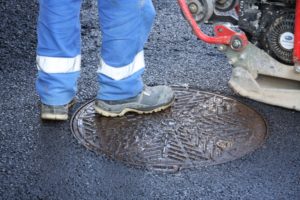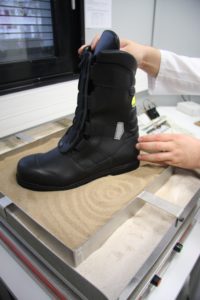Research centres like the French CTC follow the developments of the leather, footwear, leather goods, and gloves industries, offering an important service for the compliance, certification, tests and quality assessments of these sectors in accordance with EU Directives and safety standards.
Today, in the field of footwear, the global standard (ISO TC 216) and European one (CEN TC 309) are closely tied into one another to the extent that almost all new projects are realised as part of a joint effort. This in fact has been the basis for founding a new organisation with five dedicated worktables: physical tests; environmental factors (including safety); v ocabulary/definitions; sizes; measurements; and bacteriology. Among the issues, safety obviously remains a priority, and multiple chemical analyses are currently underway for nitrosamines, phthalates, and heavy metals.
ocabulary/definitions; sizes; measurements; and bacteriology. Among the issues, safety obviously remains a priority, and multiple chemical analyses are currently underway for nitrosamines, phthalates, and heavy metals.
Instead, as far as Personal Protective Equipment (PPE) is concerned, 2018 was an exceptional year, thanks to the impl ementation of the new European PPE Regulation (EU) 2016/425 (this past 21 April). This regulation in fact replaces the previous PPE directive 89/686/EEC as of 21 April 2019: during the year of transition, both standards will be valid and all producers of PPE will have to adjust their certifications to comply with the requirements of the new regulation. For this reason, it will be necessary to refer to the European standardisation. Although the standards of the European EPI are not strictly mandatory, some of them are unavoidable, since they determine compliance with European legislation. Published in the Official Gazette of the European Union, they are primarily used by notified bodies to issue CE approvals.
ementation of the new European PPE Regulation (EU) 2016/425 (this past 21 April). This regulation in fact replaces the previous PPE directive 89/686/EEC as of 21 April 2019: during the year of transition, both standards will be valid and all producers of PPE will have to adjust their certifications to comply with the requirements of the new regulation. For this reason, it will be necessary to refer to the European standardisation. Although the standards of the European EPI are not strictly mandatory, some of them are unavoidable, since they determine compliance with European legislation. Published in the Official Gazette of the European Union, they are primarily used by notified bodies to issue CE approvals.
Over the last few months, the main changes in PPE for the footwear industry have included:
– the revision of the EN 12568 standard regarding toecap and penetration-resistant inserts, which is currently under review: it will be replaced by EN ISO 22568, Parts 1-4. The main changes will regard non-metallic penetration-resistant inserts.

– EN ISO 20349-1: “PPE – Footwear Protecting against Risks in Foundries and Welding – Part 1: Requirements and Test Methods for Protection against Risks in Foundries”.
– EN ISO 20349-2: “PPE – Footwear Protecting against Risks in Foundries and Welding – Part 2: Requirements and Test Methods for Protection against Risks in Welding and Allied Processes”. Both standards were published in 2017, replacing the previous EN ISO 20349. In particular, they specify the areas of protection and the use of new thermal testing methods.
– Footwear protecting against chemicals: EN 13832, Parts 1-3. The standards will be published before the end of 2018.
– Protective footwear for motorcycle riders: EN 13634 (published in December 2017).
– Footwear for electrical protection: EN 50321-1 (January 2018).
– Test method for slip resistance: EN ISO 13287. At this point in the process, it is probable that the metal sheet will disappear. It will be replaced by conditions of glycerine-ceramic. At the same time, the positioning of the shoe flat to the floor will be replaced by a test on the forepart.
– For now, the revision of the EN ISO 20344, 20345, 20346 and 20347 series is awaiting the end of the assessment on penetration and slip resistance. New areas of interest are also currently under evaluation, like the vapour permeability of the entire shoe or the upper part of the shoe (in the future, EN ISO 21353, parts 1 to 5).



